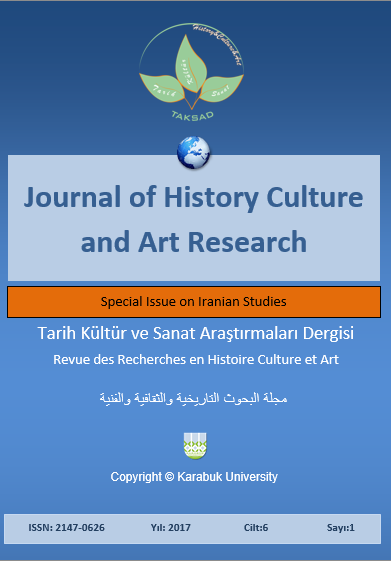The Understanding and Emotion Caused by an Architect-Built Space Using Music
DOI:
https://doi.org/10.7596/taksad.v6i1.782Keywords:
Music, Emotion, Understanding, Form, Architecture.Abstract
Music and architecture are two of the effective components of the lives of human beings which are especially important. However, the link between these two components and their impacts on the understanding of the audience are some of the issues which have not been focused on. This bond is caused by a mutual space. A space which can either be created by a work of architecture or a piece of music. Despite of the previous studies that focused on investigating the different aspects of these two forms of art that link them together, this paper aims to discover and understand the perceptual – emotional relationship between music and architecture further than the preliminary principles that link them. It also aims to find an answer to this question: how can a relationship be established between various linking aspects of these two arts that would be understandable for their audiences?
The present study is an analytical – descriptive research that relies on library studies and uses a logical argument in order to analyze, interpret and compare the relationship between music and architecture and its impact on the understanding of the audience.
Accordingly, after reviewing the research literature and stating the concept of space in architecture and music, the linking aspects of these two forms of art have been comparatively analyzed. According to the conclusion of results, by taking into consideration various frequencies and generation of a variety of geometrical orders in each frequency, the more intense music is the more complex its spatial impact will be on the feeling and understanding of the audience.
References
Anthoniades, Anthony, C. (2007). Architectural Poetry (Creation in Architecture). Translated by Ahmadreza Ay, 3rd Edition, Tehran: Soroosh, 154.
Robinson, J. B. (1983). Foundations of Music, History, Translated from German, Cambridge: Cambridge University Press, 57.
Seyedian, Seyed Ali, Samipoor, Timan (2016). “Interpretation of Musical and Architectural Elements with a Common Language: Case Study of Iran’s Traditional Architecture and Music”. Comparative Art Studies. 6th Year, 11th Issue, 8: 2016.
Bagheri, Ebrahim (2011). Applicable Concepts in Sensibility Design. Journal of Fine Arts–Visual Arts. 50th Issue, 2012.
Bowman, W. D. (1998). Philosophical Perspectives on Music. New York: Oxford University Press, 273-175.
Clifton, Thomas (1983). Music as Heard: A Study In Applied Phenomenology. New Haven, Conn: Yale University Press. (137-204).
Falamaki, Mohammad Mansoor et al. (1990). Architecture and Music. 1st Edition, Tehran: Faza Publications, 40-42, 285.
Gibson, J. J. (1966). The Senses Considered as Perceptual Systems, Houghton Mifflin Co, Boston & New York.
Groot, Linda & Wang, Davi (2012). Research Methods in Architecture. Translated by Alireza Eynifar, 6th Edition, Tehran: Tehran University, 283.
Grooter, Yorg Court (2003). Aesthetics in Architecture. Jahanshah Pakzad and Abdolreza Homayoon, 5th Edition, Tehran: Shahid Beheshti University, 252.
Jormakka, K. (2009). Basics Design Methods. Berlin: Birkhauser Press, 21.
Kim, Dongha & Boradkar, Prasad (2006). Sensibility Design, retrieved from www.Citeseerx.Ist.Psu.Edu (2010-07-24).
Morris, Stephen & Sharman, Lydia (2005). Images of Sound Symmetry Hidden and Manifest in Physics and Art. Faculty of Arts & Science, University of Toronto, Idea&S, 2(2), 12.
Norberg Schulz, Ch. (1971). Existence, Space and Architecture. London: Oslo Press,138.
Rezvani, Alireza (2013). The Spirit of the City, A Redefinition of the City, Space, Urban Space and Determination of Refreshing Indexes. National Conference on Urban Management, Culture and Architecture, Karaj, Applicable and Scientific Education Center of Karaj’s Municipality, Did Architectural Office, 4.
Rezvani, Alireza (2015). Spatial Networks and Geometrical Volumes, 1st Edition, Misagh Publications, 196.
Sapper, R. (ed.). (1999). The International Design Yearbook 13, New York & London: Abbeville Press.
Starck, P. (ed.). (1995). The International Design Yearbook 1997, New York & London: Abbeville Press.
Wattenberg, M. (2009). Arc Diagrams: Visualizing Structure in Strings. London: Cambridge University Press, 120-140.
Xenakis, I. (2008). Music and Architecture. New York: Pendragon University Press, 150.
Downloads
Published
How to Cite
Issue
Section
License
All papers licensed under Creative Commons 4.0 CC-BY.- Share — copy and redistribute the material in any medium or format
- Adapt — remix, transform, and build upon the material for any purpose, even commercially.
Under the following terms:
Attribution — You must give appropriate credit, provide a link to the license, and indicate if changes were made. You may do so in any reasonable manner, but not in any way that suggests the licensor endorses you or your use.
- No additional restrictions — You may not apply legal terms or technological measures that legally restrict others from doing anything the license permits.







